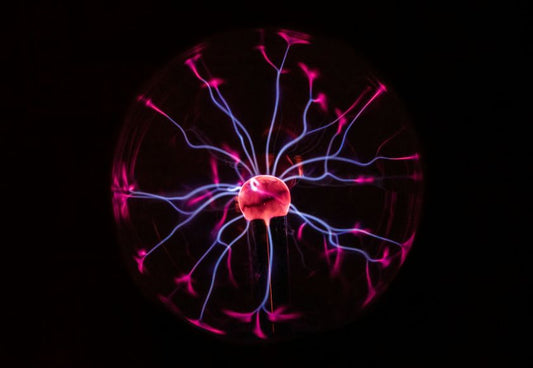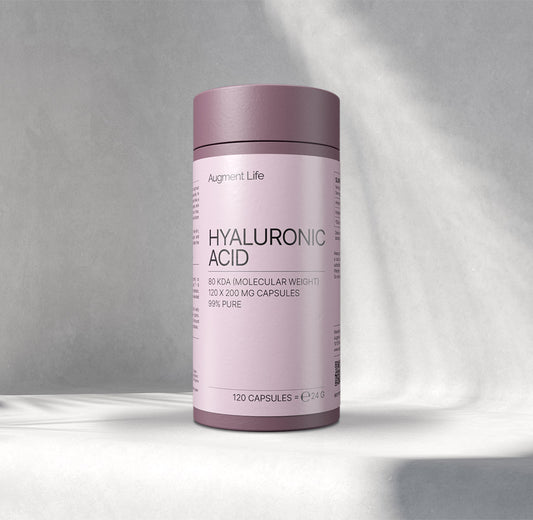In the hustle and bustle of modern life, anxiety and stress have become constant companions, taking a toll on our well-being. Rest often seems like a luxury rather than a necessity. But what if the true path to peak performance lies not in asking if we’ve worked hard enough to earn rest, but in questioning whether we have ensured adequate rest to work at our best? Fortunately, powerful relaxation techniques can bring rejuvenation and deep rest.
Andrew Huberman, Ph. D., a neuroscientist and tenured professor at Stanford School of Medicine, created the term non-sleep deep rest (NSDR). Huberman has made numerous significant contributions to brain function, brain development, and neural plasticity. He is also the host of the Huberman lab podcast, which is regularly ranked the #1 health podcast in the world.
Keep reading the article and find out what NSDR is and how you can practice it.
What is NSDR?
Non-sleep deep Rest (NSDR) is an umbrella term that includes a variety of practices that guide the brain and body into a state of deep relaxation without falling asleep completely (1). These practices can encompass hypnosis, yoga nidra, and meditation. They promote better brain and body function through a deliberate and direct shift toward deeper relaxation without sleeping.
NSDR induces deep relaxation, akin to sleep while remaining conscious. It can allow you to control the relaxation state of your nervous system, and your overall state of mind. It can also help you to restore your sense of mental and physical vigor.
These sessions typically last 10 to 30 minutes, and you can use them at different times of the day to rest and recharge your mind or to prepare it for sleep.
Benefits of NSDR
Dopamine Boost
Dopamine plays a crucial role in vital cognitive processes, including attention, focus, and motivation. Lower levels of dopamine lead to increased feelings of stress, irritability, and anger. NSDR helps to restore dopamine levels in parts of the brain involved in cognitive control and motivation. Increased dopamine levels can help you maintain sharp mental clarity and stay focused on your goals.
Enhanced Learning and Memory
NSDR supports improvements in cognition through neuroplasticity, a process in which neurons and neural networks in the brain change their connections and behavior. Neuroplasticity is the key mechanism underlying learning and memory. This process naturally occurs during deep sleep but can also occur during NSDR when brain waves reach a sleep-like frequency. Enhanced neuroplasticity through NSDR boosts learning, improves cognitive function and promotes memory retention.
Stress and Anxiety Reduction
NSDR lowers cortisol levels and promotes an intense state of calm which helps relieve stress. It activates the parasympathetic nervous system, which promotes relaxation and recovery.
Improves one’s ability to fall asleep
Many people have difficulty falling asleep because they believe they have to turn off thoughts completely like a switch. NSDR helps us gain more control over our ability to rest and aids in falling asleep more easily. Through the practice of NSDR, you develop the skill of slowing down your thoughts to achieve a relaxed state. During the transition to sleep our thoughts become fragmented and the brain enters a state where space and time are very fluid and not under our conscious control.
Complementary to Sleep
NSDR can help to recover some of the sleep that might be lost at night as it offers an alternative route to achieving benefits similar to sleep. It promotes recovery from sleep deprivation.
A recent study demonstrated that NSDR is associated with significant benefits, including:
- improved physical readiness,
- emotional balance,
- overall recovery,
- a reduction in stress levels and negative emotional states.
Additionally, the NSDR protocol led to improvements in both cognitive and physical performance. Hence, NSDR could be a valuable strategy for acutely enhancing overall well-being and readiness (2). However, keep in mind that there is only one study on the benefits of NSDR done so far, and the results can be considered as preliminary.
NSDR vs Yoga Nidra
While NSDR can encompass practices like Yoga Nidra, there are key differences between the two. Andrew Huberman mentioned that his NSDR is derivative of the Yoga Nidra and other ancient breathwork practices but evolved to grow outside of the scope of just yogic practices.
Yoga Nidra is a structured form of guided meditation that leads to deep relaxation while maintaining consciousness. The main purpose of Yoga Nidra, rooted in ancient practices, is to induce a state of profound relaxation, self-awareness, and inner healing through access to the subconscious mind. In Yoga Nidra, there is a whole philosophical context of chakras, koshas, elements, etc, that teachers can build resources around.
However, NSDR doesn’t have this scriptural and philosophical context, which makes it more accessible to a broader audience seeking mental and physical rejuvenation. NSDR aims to provide deep rest to the body and mind while staying awake.
Yoga Nidra vs meditation
Although there are overlaps between Yoga Nidra and meditation, there are also some key differences.
Yoga Nidra is a rejuvenating ‘sleep' that relaxes the mind and bodily senses, promoting self-awareness in the process. It involves a guided journey through the body, systematically relaxing each part through body scans and visualization while maintaining consciousness.
In Yoga Nidra, also known as yogic sleep, you lie down, and the aim is to move into a deep state of conscious awareness sleep, which is a deeper state of relaxation with awareness. You are not asleep, nor are you awake. You are in an in-between place where the mind is still and calm and the body feels like a feather, much like a dreamless sleep.
Meditation typically focuses more on breath or a specific area of attention and can also include mindfulness of the body. In meditation, an individual’s level of awareness is heightened. Meditation is not practiced for relaxation, but rather to enter a highly conscious state where spiritual growth and awareness can begin. During meditation, you typically sit in a comfortable seated position with legs crossed and palms facing upward. You are in a waking state of consciousness while focusing the mind and allowing thoughts to come and go.
NSDR vs meditation
NSDR and meditation both help achieve deep relaxation, but they differ in several key aspects.
NSDR focuses on maintaining awareness during deep relaxation, without entering traditional sleep states. During NSDR, consciousness remains present while the body relaxes as if in deep sleep.
On the other hand, meditation often involves altered states of consciousness, promoting heightened awareness and a tranquil mental state. During meditation, the awareness is often directed towards an internal focus or something else, like for example breath or mantra, without necessarily reaching a state of deep relaxation.
How to practice non-sleep deep rest techniques?
Andrew Huberman recommends these steps and resources that you can follow to practice non-sleep deep rest (NSDR):
-
Identify the practice: NSDR includes practices like guided hypnosis, Yoga Nidra, and meditation. It is supposed to guide the brain and body into deep relaxation while remaining awake, thus allowing stress reduction, cognitive benefits, and recovery.
-
Morning Sessions: If you haven’t had enough sleep during the night, NSDR might be the best thing that you could do first thing in the morning. NSDR helps simulate REM-like rest, which can increase recovery and alertness throughout the day.
-
Body Scans and Relaxation: NSDR protocols can be performed seated or lying down. These protocols may require you to perform long exhalation breaths, or body scans to relax each part of your body progressively. These methods help the body shift into a more tranquil state.
- Zero-Cost Resources: You can easily find 10 or 20-minute guided NSDR protocols by Andrew Huberman on YouTube by searching for “Huberman NSDR”. These are also available on platforms like Spotify and can be accessed via hubermanlab.com.
Conclusion
By incorporating NSDR into our daily habits, we can truly change our lives for the better.
Even a brief, 10-minute session can help us to keep up with the pace of modern life. Consistency is key.
Keep in mind that practicing NSDR brings a wide array of benefits, including improved physical and mental performance, reduced stress and anxiety, enhanced overall well-being, and accelerated learning and plasticity within the brain.
Feeling sleep-deprived and unmotivated? NSDR can help recover some of the sleep that might be lost during the night and restore dopamine levels in parts of the brain involved in cognitive control and motivation.
After all, you do have those 10 minutes every day, don’t you? Pause, take a break. Your future self will thank you.
Literature sources:
- Huberman Lab (2024). NSDR, Meditation and Breathwork.
https://www.hubermanlab.com/topics/nsdr-meditation-and-breathwork
- Boukhris O, Suppiah H, Halson S, Russell S, Clarke A, Geneau MC, et al. The acute effects of nonsleep deep rest on perceptual responses, physical, and cognitive performance in physically active participants. Appl Psychol Health Well Being. 2024 Jul 2. doi: 10.1111/aphw.12571.











